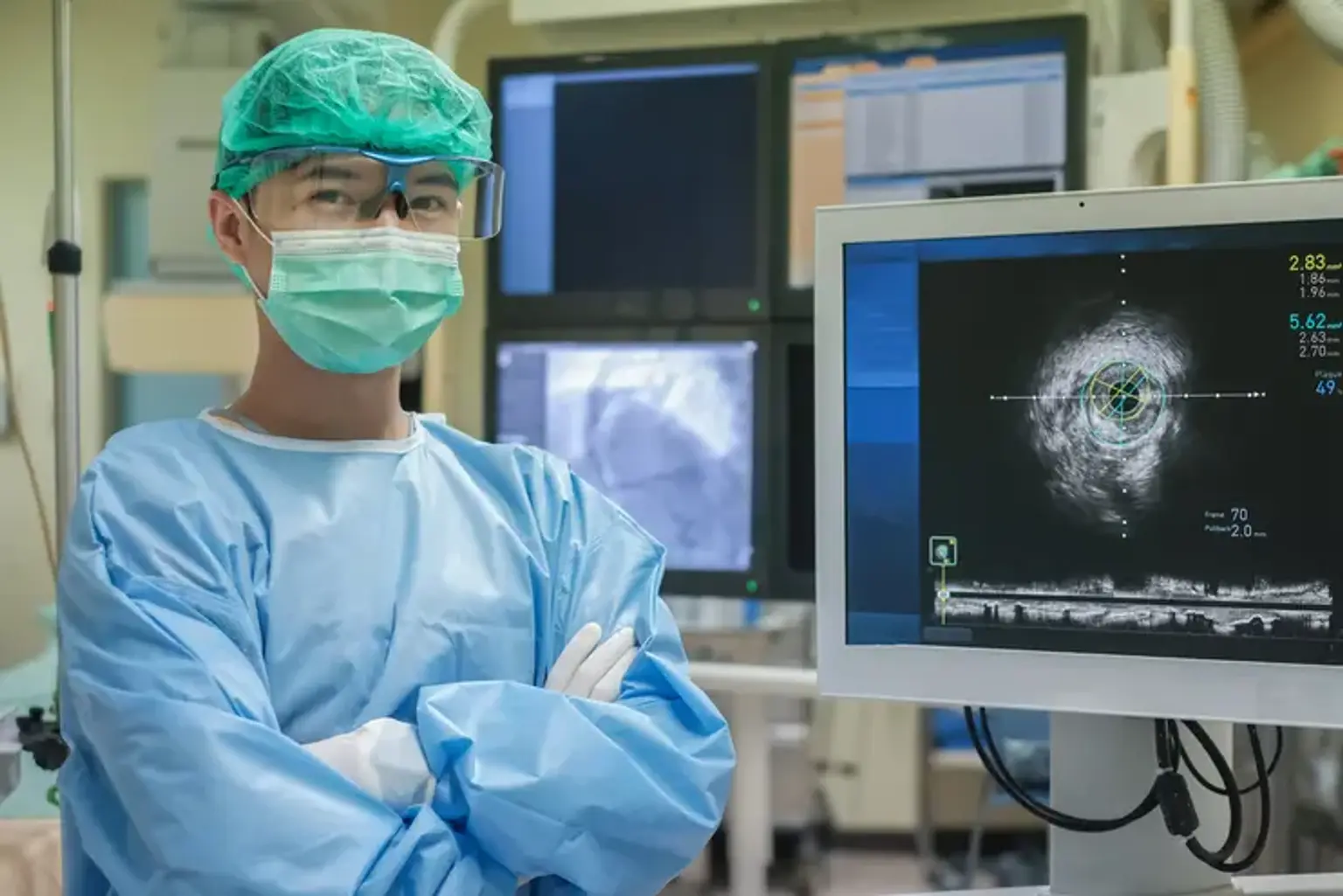Intravascular Ultrasound (IVUS)
Overview
Intravascular ultrasonography (IVUS) generates sound waves and pictures of blood vessels using a transducer or probe. When used to assess the coronary arteries, IVUS may reveal the complete artery wall and offer critical information regarding the quantity and kind of plaque deposition, assisting in determining if you are at risk for a heart attack. Ultrasound does not utilize ionizing radiation, has no known side effects, and may offer clear views of soft tissues that x-ray scans cannot.
This method does not need any extra preparation. However, surgeons frequently combine it with another operation. As a result, consult with your doctor on how to prepare and whether you'll be admitted to the hospital. If you will be sedated during your treatment, your doctor may advise you not to eat or drink anything for up to eight hours before your exam.
